The Daily Yomiuri has an article about a Tokyo National Museum exhibition currently being held on Izumo Taisha. (See end for details.)
**************************************************************************
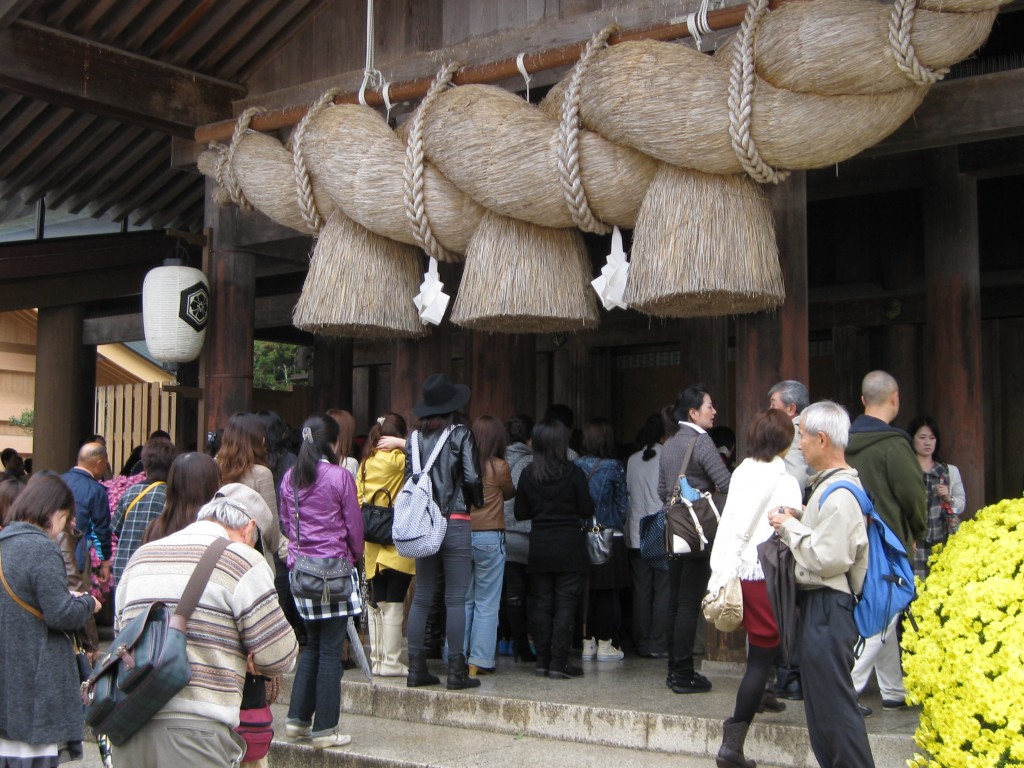
People line up to pray at Izumo Taisha
Izumo Taisha: Tree trunks pillar of heavenly treasures
Yasuo Hayakawa / Yomiuri Shimbun Staff Writer (Nov. 2, 2012)
Kannazuki, meaning the 10th month of the lunar calendar, literally means the month without gods because it is believed all the gods around the country go to Izumo Taisha shrine in Izumo, Shimane Prefecture, in that month. But in the Izumo region, in the eastern part of the prefecture, the same month is called Kamiarizuki, the month of the gods, as they all are believed to gather at the shrine then.
An exhibition, Treasures from Sacred Izumo, is being held through Nov. 25 at Tokyo National Museum in Ueno, where visitors can get a glimpse of Izumo as a sacred place from ancient times. The special exhibition marks the completion next year of renovation of the Shinto shrine, the first renovation in 60 years, and the 1,300th anniversary this year of the Kojiki (Chronicles of Ancient Matters), a record of myths about Japan’s origins.
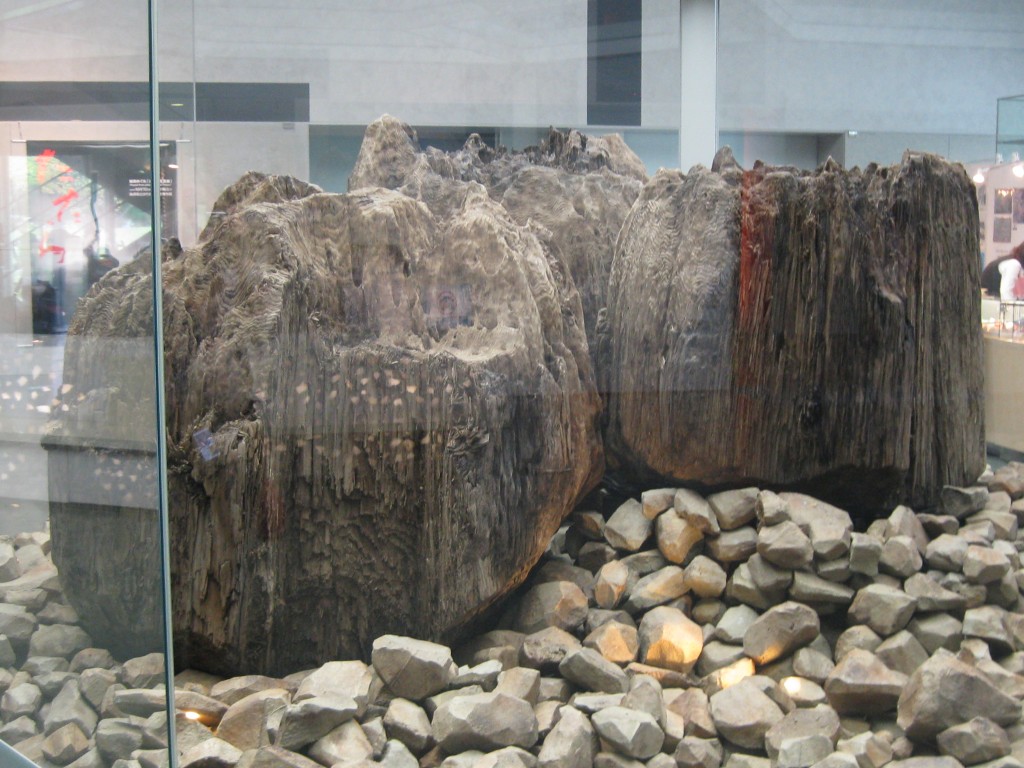
Trunks that were unearthed and probably lashed together to make a huge pillar for the tall main building at Izumo (exhibit at Shimane Exhibition Hall next to Izumo Taisha)
“Uzubashira,” parts of three cypress trunks, are a main attraction at the venue. They are believed to have been used as part of a pillar for the main hall of Izumo Taisha, which was built in 1248 during the Kamakura period (1192-1333). The piece is about three meters around.
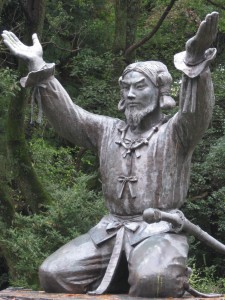
Okuninushi, chief god of the Izumo area
Carved on the back of it is a scale model of the shrine’s ancient main hall, which was 48 meters from ground to ceiling, that catches the eyes of visitors. The ceiling of the current main hall of the shrine is about 24 meters high. I can imagine people in ancient times looking up at the ceiling of the main hall as if it was floating in heaven.
The Kojiki, compiled in 712, says that after the chief god Okuninushi created his country, he handed control of it to Amaterasu, the grand goddess of the sun, at her request. He then asked for a place to live after his retirement–a shrine towering into the air with thick pillars and ornamental crossbeams in the gable. This is said to be the origin of Izumo Taisha. A drawing in the exhibition on which the Uzubashira pillar and the main hall are depicted resonate with the myth in Kojiki.
Myths about the Izumo region comprise about one-third of all the myths in the Kojiki. Why do the chronicles include so many myths about the region? Kikuo Morita, curator of the Shimane Museum of Ancient Izumo in Izumo, explained the background of the rich Izumo culture from the Yayoi period (ca 300 B.C.-ca A.D. 300). Seventy-nine bronze artifacts, including spearheads, unearthed from the Kojindani ruins in Izumo and the Kamo-Iwakura ruins in Unnan, the same prefecture, are on display in the exhibition.
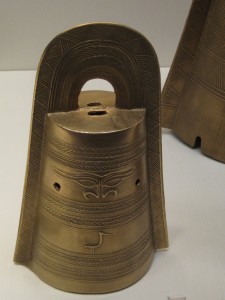
Dotaku bell, unearthed in the Izumo region
Fifty-six of 358 doken bronze swords unearthed from the Kojindani ruins are also on display at the exhibition. The 358 swords are the most excavated at one site in Japan. Sixteen of 39 dotaku bell-shaped bronze vessels excavated from the Kamo-Iwakura ruins, which are thought to have been used for ceremonies, are also displayed. They, too, are the biggest collection of such artifacts unearthed at one site.
Dohoko socketed bronze spearheads found at Kojindani and on display are believed to have been produced in the northern part of Kyushu. And dotaku made with the same mold as that used for Kamo-Iwakura were found in the Kinki, Chugoku and Shikoku regions, indicating there was a wide exchange of bronzeware at that time. “Ancient culture, which emerged from exchanges with other regions, might have made Izumo a source of mysterious power,” Morita said.
Doka bronze halberds and magatama comma-shaped beads, also on display, are said to have been unearthed from underneath a large stone about 200 meters east of Izumo Taisha. It is clear that the surrounding area has been the home of special places from ancient times.
The sacred treasures and images on display at the venue speak volumes about why Izumo has been attracting public attention. Izumo was a sacred place in ancient times, is now a sacred place and will forever be a sacred place.
**********************************************************************
“Treasures from Sacred Izumo: On the Occasion of the Renovation of Izumo Taisha Shrine and 1,300 Years of the Kojiki Chronicle” at the Tokyo National Museum. Open 9:30 a.m.- 5 p.m. (8 p.m. on Fridays). Closed on Mondays. Admission: 800 yen for adults; 600 yen for university students; 400 yen for high school students; free for middle school students and younger children. For more information, call (03) 5777-8600 or visit http://izumo2012.jp/
(For other entries about Izumo, click under the relevant category in the column to the right of this.)
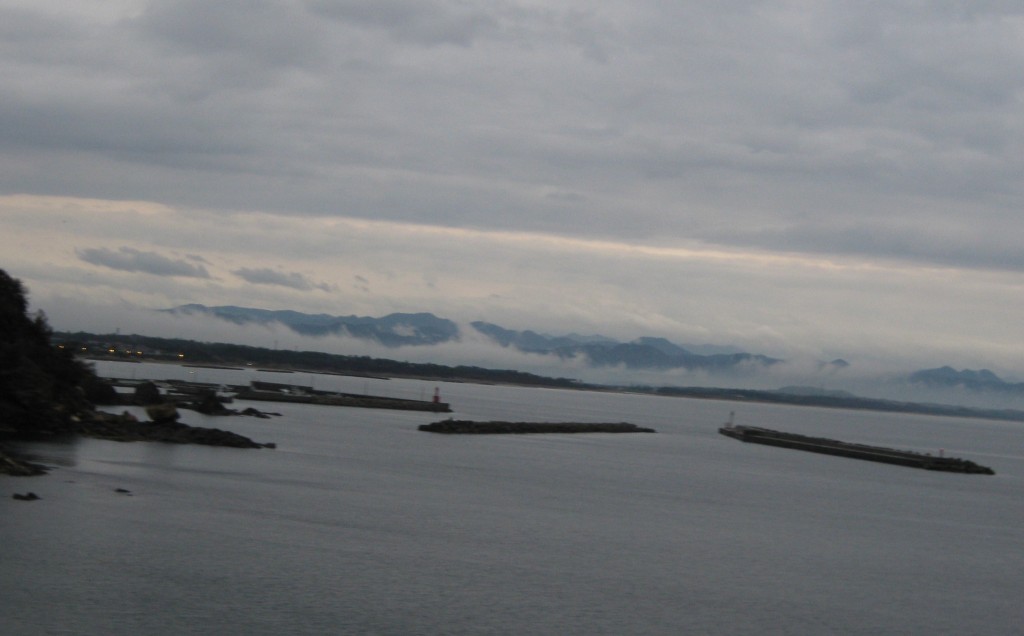
Sacred Izumo coastline with its 'eight-fold clouds' where all the kami of Japan arrive every autumn for a month-long gathering

Leave a Reply